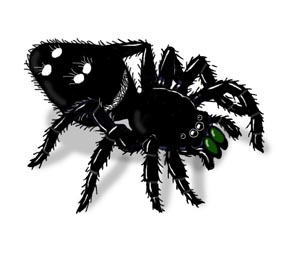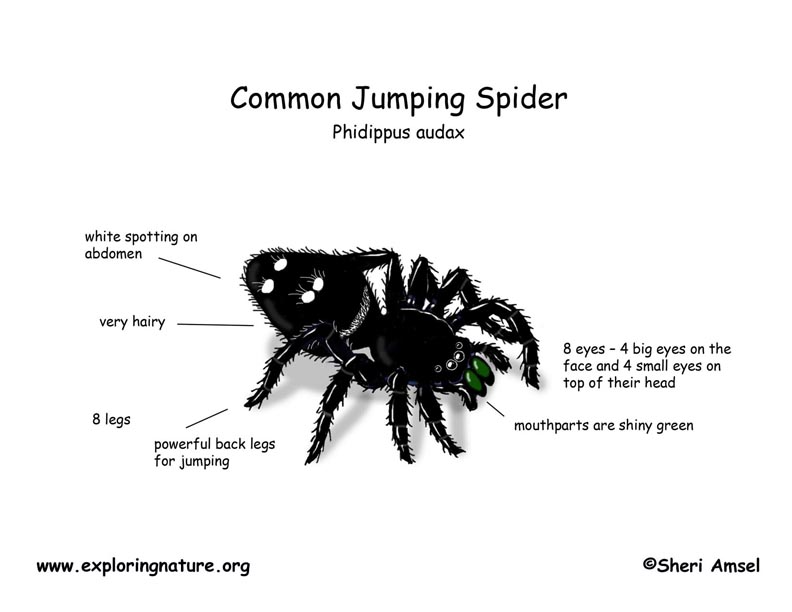

They are very common in the eastern U.S. and Canada.
They live in gardens and shrubberies and in homes.
They are small spiders. The females are larger than the males at more than 1/2 inch long. They have 8 eyes and very good vision for hunting. They have 4 big eyes on the face and 4 small eyes on top of their head. They are very hairy. The abdomen has some white spotting. The mouthparts are shiny green. They have powerful back legs for jumping. They pounce on prey.
They do not build webs, but do use their silk to build places to hide in the foliage and bark of trees. They are active during the day (diurnal). They will bite if disturbed. They are skilled hunters, sneaking up and pouncing on prey. They dangle a line of silk to catch them if they miss prey.
They eat other spiders and insects.
The female lays eggs in an egg sac under a silk blanket. She will guard the egg sac and newly hatched spiderlings until they are able to be on their own.
Kingdom: Animalia
Phylum: Arthropoda
Class: Arachnida
Order: Araneae
Family: Salticidae
Genus: Phidippus
Species: P. audax
When you research information you must cite the reference. Citing for websites is different from citing from books, magazines and periodicals. The style of citing shown here is from the MLA Style Citations (Modern Language Association).
When citing a WEBSITE the general format is as follows.
Author Last Name, First Name(s). "Title: Subtitle of Part of Web Page, if appropriate." Title: Subtitle: Section of Page if appropriate. Sponsoring/Publishing Agency, If Given. Additional significant descriptive information. Date of Electronic Publication or other Date, such as Last Updated. Day Month Year of access < URL >.
Amsel, Sheri. "Spider (Common Jumping)" Exploring Nature Educational Resource ©2005-2024. March 31, 2024
< http://www.exploringnature.org/db/view/586 >

